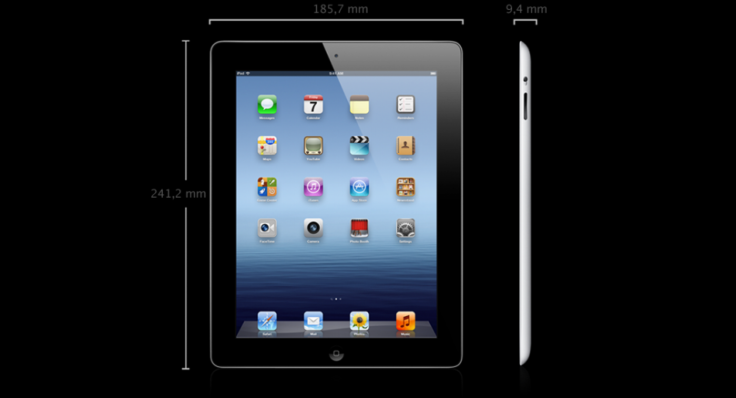Trouble For Apple's iPad 3? Analysts Warn Of Tablet Shortage Due To Retina Display

The release date for the newest Apple iPad (previously called the iPad 3) has been set for March 16, 2012, and fans of the tech giant's previous tablets are eager to try out some of its newest upgrades.
One greatly improved feature, however, the new iPad's impressive new Retina display, may be as much a reason for anxiety as for anticipation.
According to display analyst NPD DisplaySearch, supply for the tablet's major selling point is shaky at best -- and may cause the company to have a shortage of iPads almost immediately after its official release.
Apple Expects Big Sell With 'iPad 3'
One of Apple's greatest strengths is its ability to get supplies at lower prices than other companies while still delivering great products.
Apple's size and its impressive record assure suppliers and consumers that it can deliver big on its products, while the fact that the iPad shares many of the same components as the iPhone means Apple can buy crucial parts at a lower cost than its competitors.
As a result, of over 100 tablets shown at the annual Consumer Electronics Show (CES) in Las Vegas in January 2011, only the Samsung and Barnes & Noble models managed to turn a good profit, with the Amazon Kindle Fire, which premiered in November, still the only serious challenger to Apple's tablet supremacy.
Thanks to the hype built around its newest iPad, IMS Research expects the company to extend its 62 percent market share in tablet computers to 70 percent by 2013.
Apple's success is also helped by the fact that the tech giant sells roughly a third of its iPads in Apple stores or on its website, cutting out the middleman and reaping most of the profit margin.
Retina Display Proving Hard To Manufacture
But there is such a thing as being too popular, and Apple's new iPad is no exception.
Thousands of customers already pre-ordering the tablet computer, and with some rumored features like an 8MP camera somewhat downgraded in reality, it's the iPad's spectacular new Retina display that's bringing in many of the buyers.
The new iPad's 2048 x 1536 display boasts 3.1 million pixels, with a pixel density of 264 ppi (pixels per inch).
While that doesn't put it quite on par with the iPhone 4, which has a pixel density of 326 ppi, Apple asserts that the new iPad offers four times the number of pixels on its display than the iPad 2, and a million more than an HDTV.
It's an impressive figure. But according to experts with display analyst NPD DisplaySearch, it's also what's made the new Retina display very difficult to manufacture, and to manufacture well.
The new displays are reportedly being produced by Sharp, Samsung and LD Display, and Sharp is having some trouble getting its supply up to snuff.
Our understanding is that Sharp has been producing samples of the iPad 3 display using IGZO TFTs, but it is not clear whether the quality or manufacturing yields are acceptable to Apple and Sharp, NPD told TG Daily.
Although the display analyst said that the company has achieved supply/demand parity for iPad 2 shipments and may have stopped using IGZO, NPD expressed some doubt as to whether the company will be able to turn things around and keep up the pace fast enough with so many customers pre-ordering the new tablet.
Can Panel Suppliers 'Ramp Up Production'?
Beyond basic supply, meanwhile, there may also be some problems with the materials all three companies are now using to produce the new panels for the iPad.
There has been speculation that Sharp has switched back to a-Si TFT production while they work on the IGZO process, NPD notes. Meanwhile, our research indicates that Samsung and LG Display are producing the new panels using a-Si TFT.
If NPD is correct, this could spell trouble for Apple, as well. A 264 ppi is generally considered the absolute limit for pixel density for a-Si TFT, which is exactly what the new iPad sports.
Given these issues of production and general quality, Apple may find itself struggling to maintain its supply and its standards as demand for the new iPad (former iPad 3) grows.
How quickly panel suppliers are able to ramp up production will be the ultimate determining factor in terms of meeting the typical surge in demand associated with new Apple products, NPD said in its final analysis of the problem.
© Copyright IBTimes 2025. All rights reserved.





















